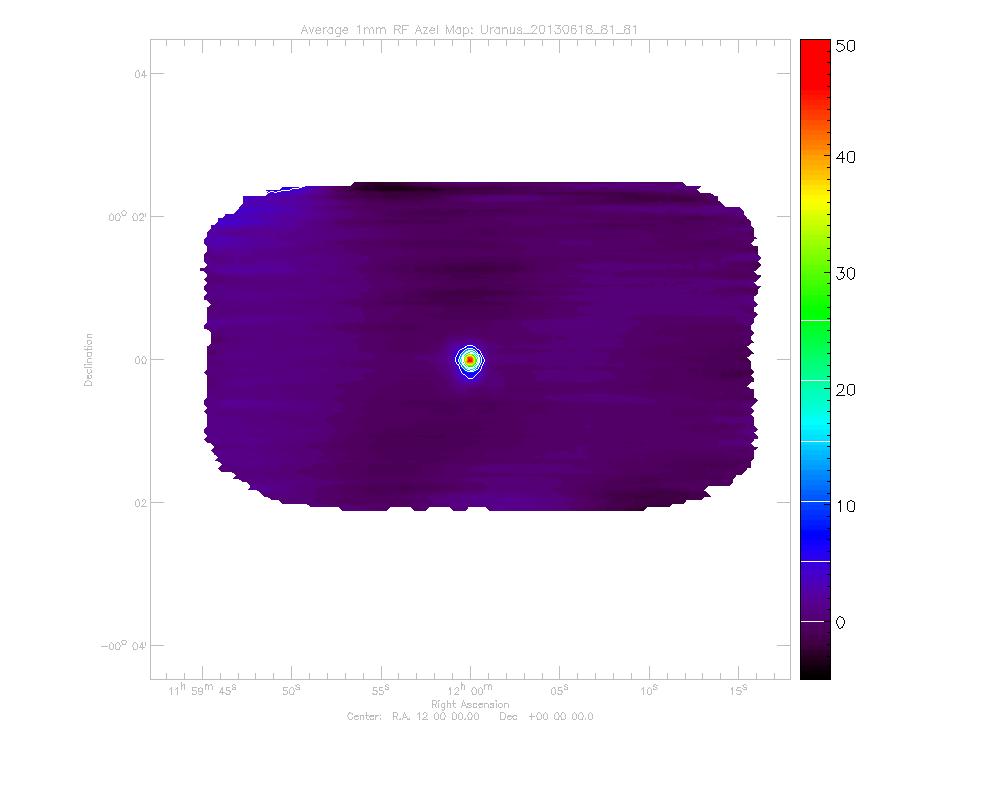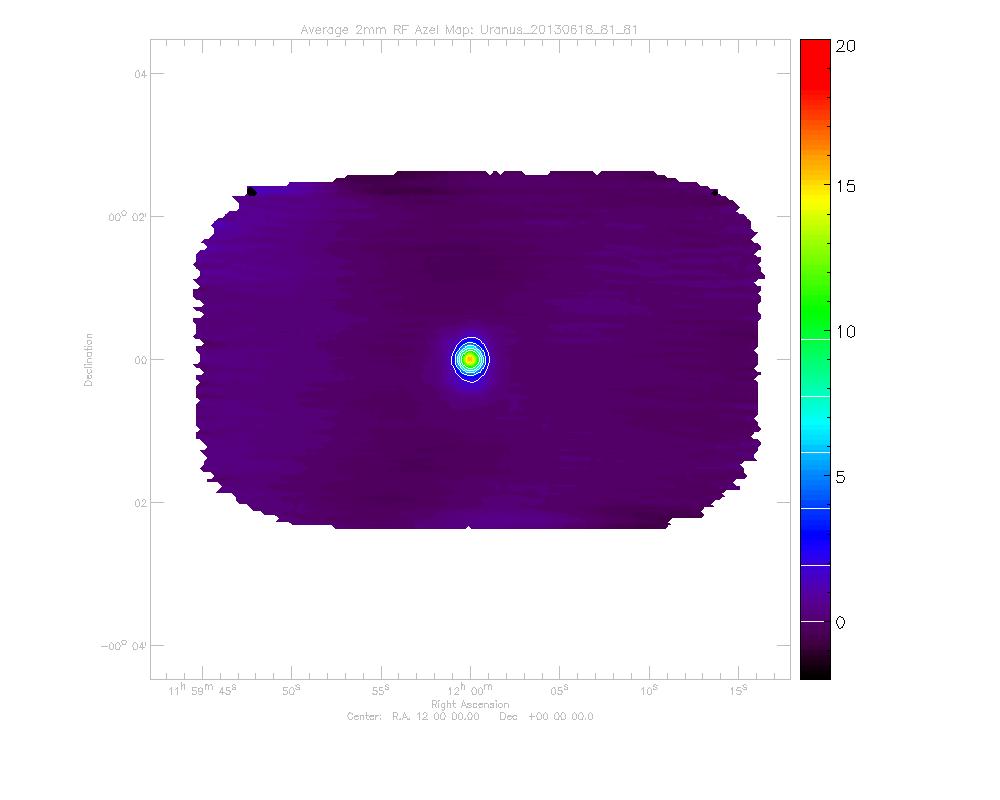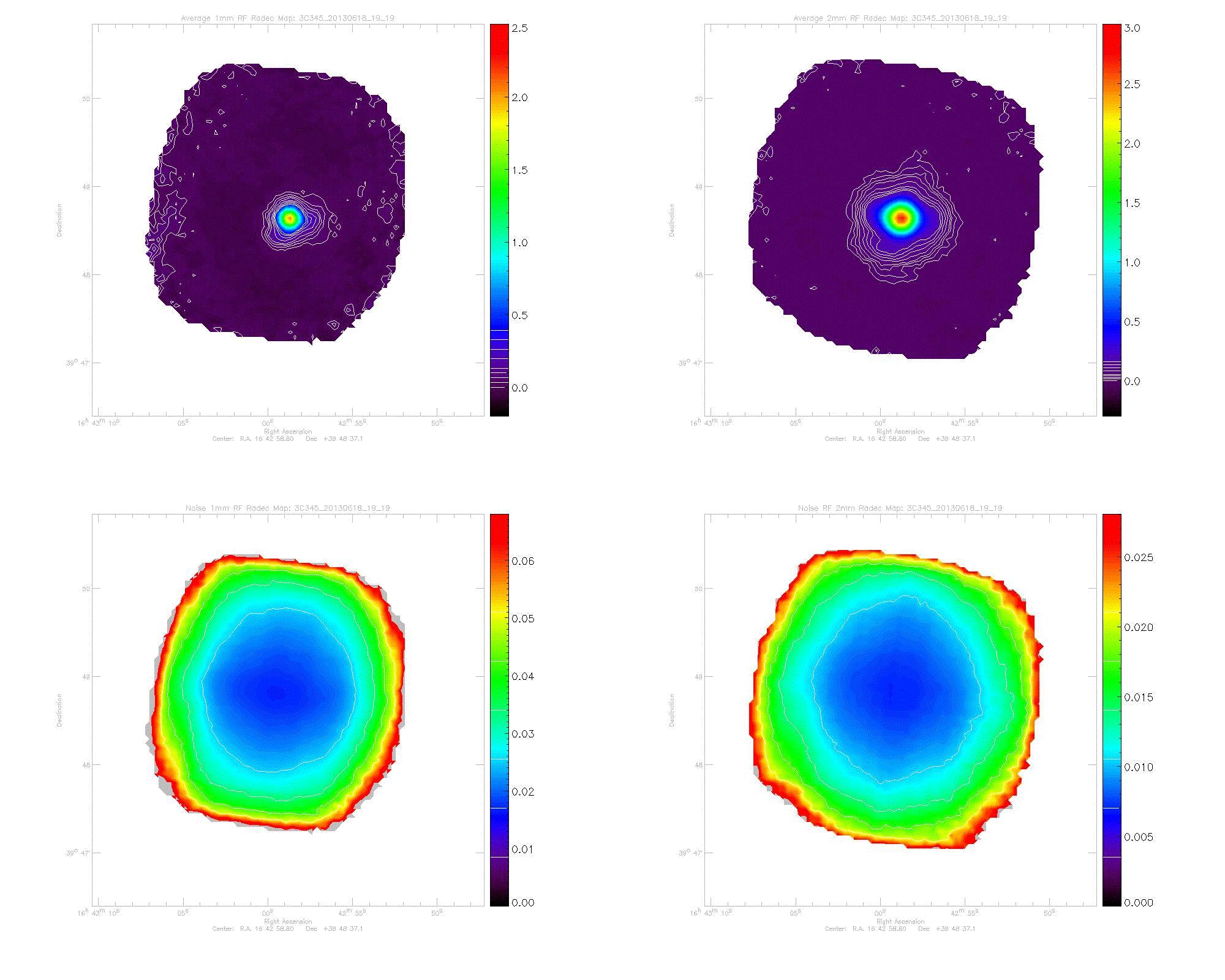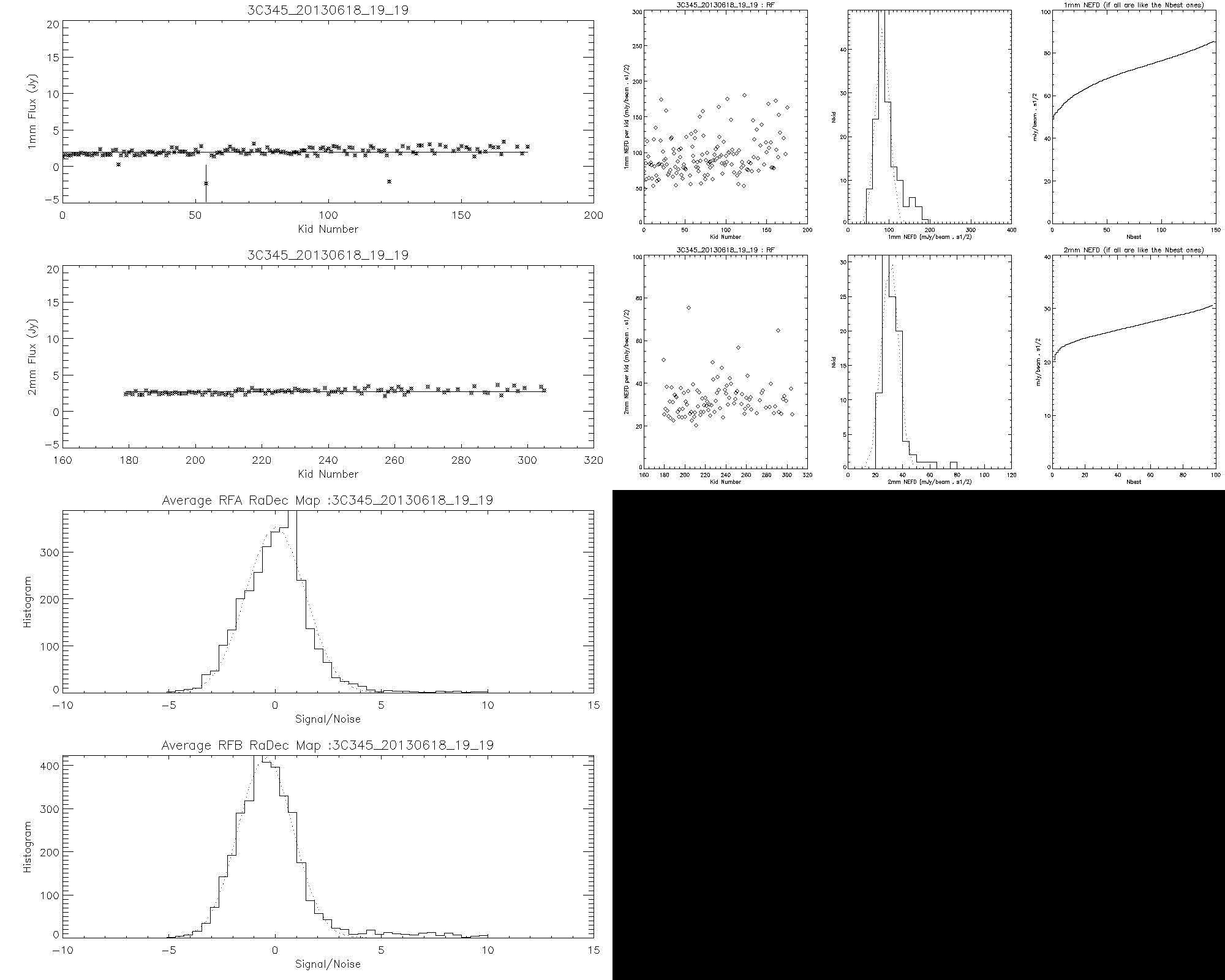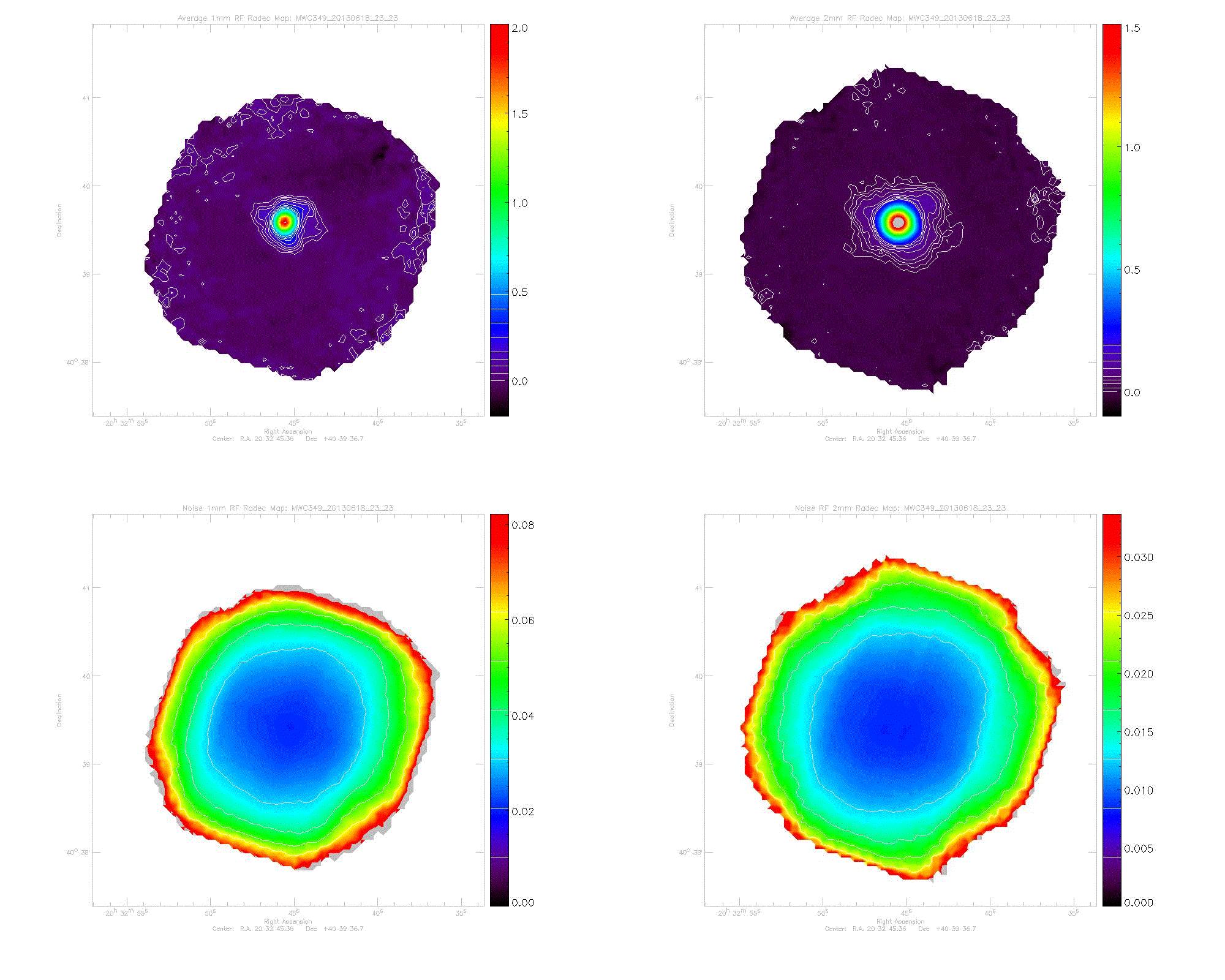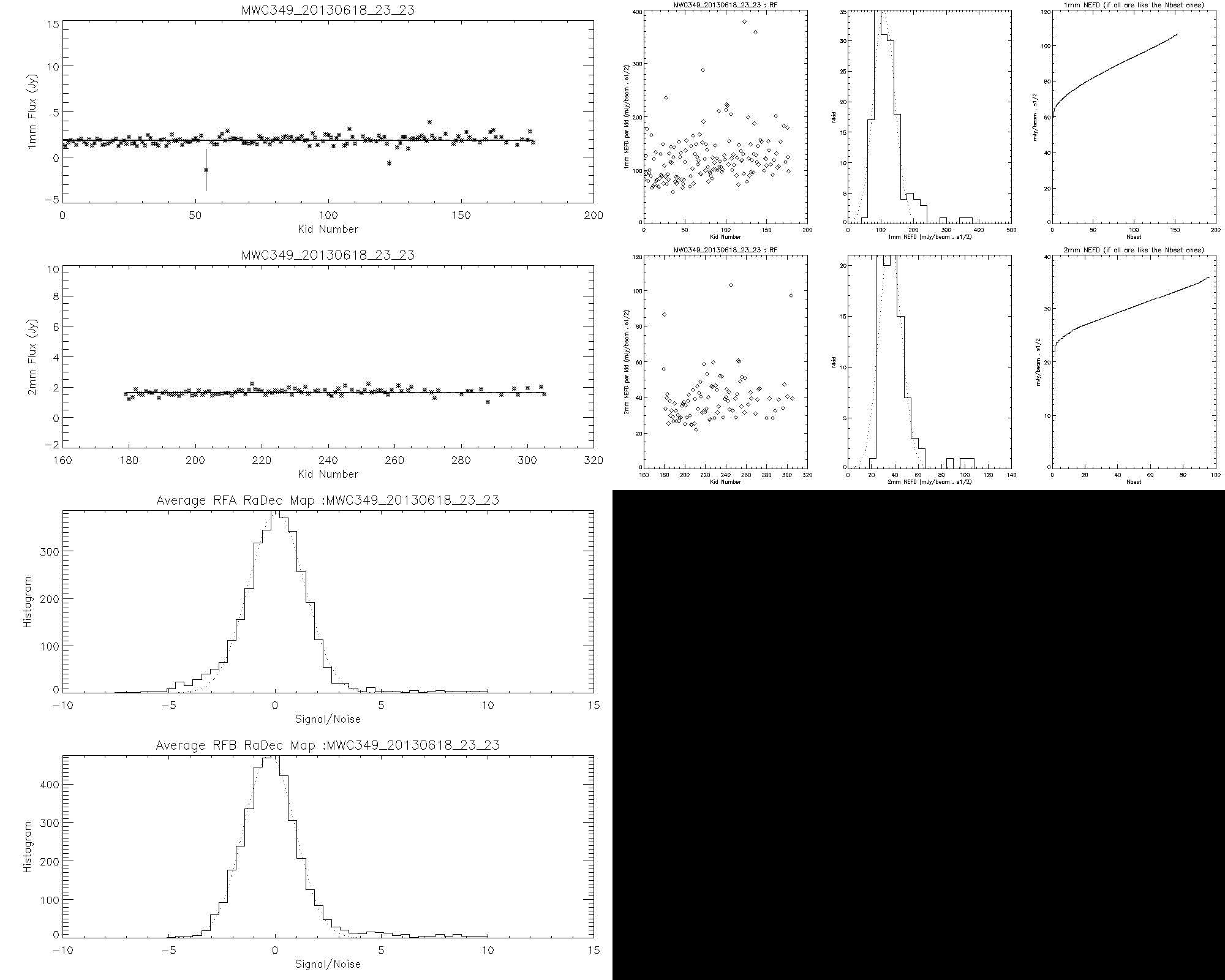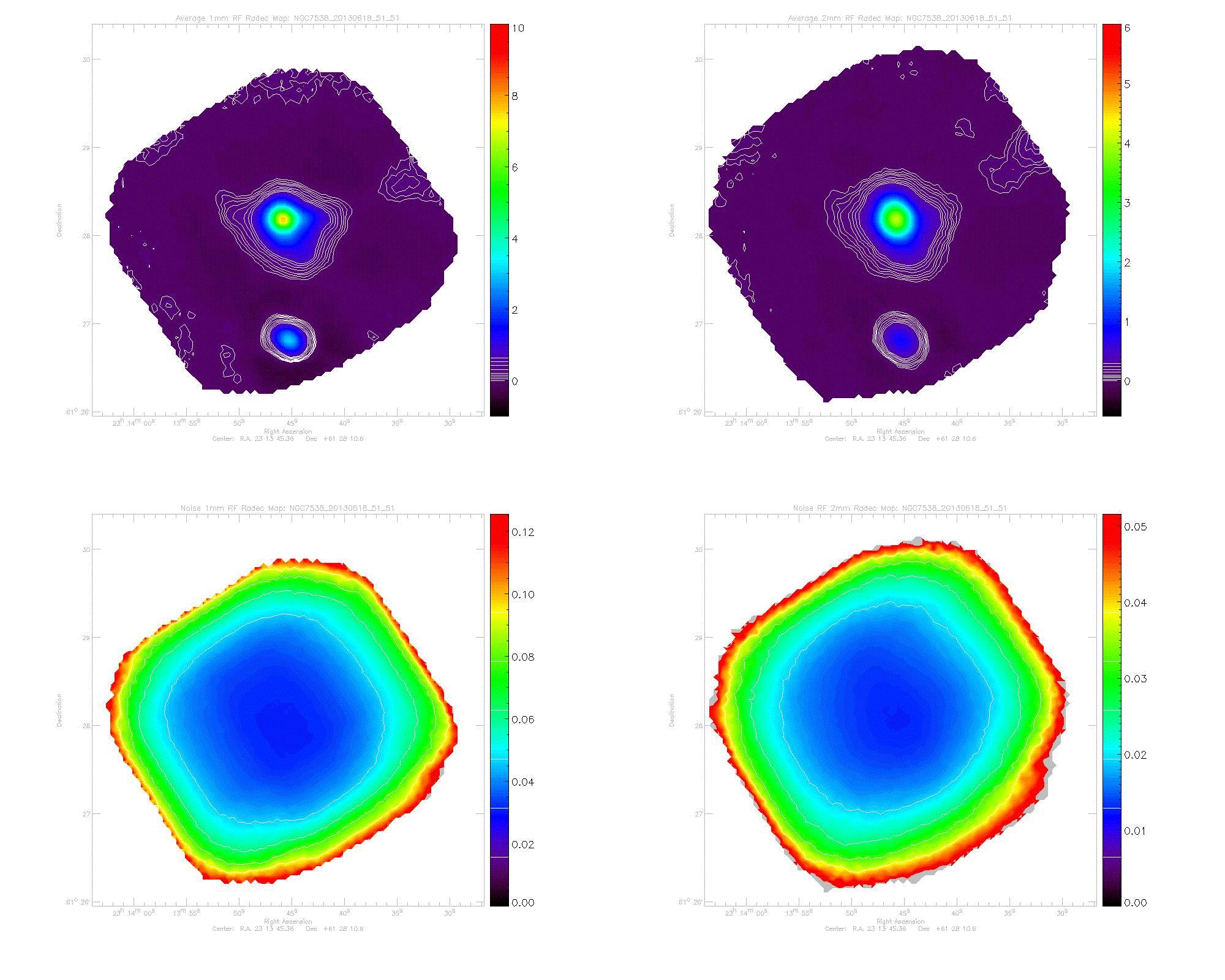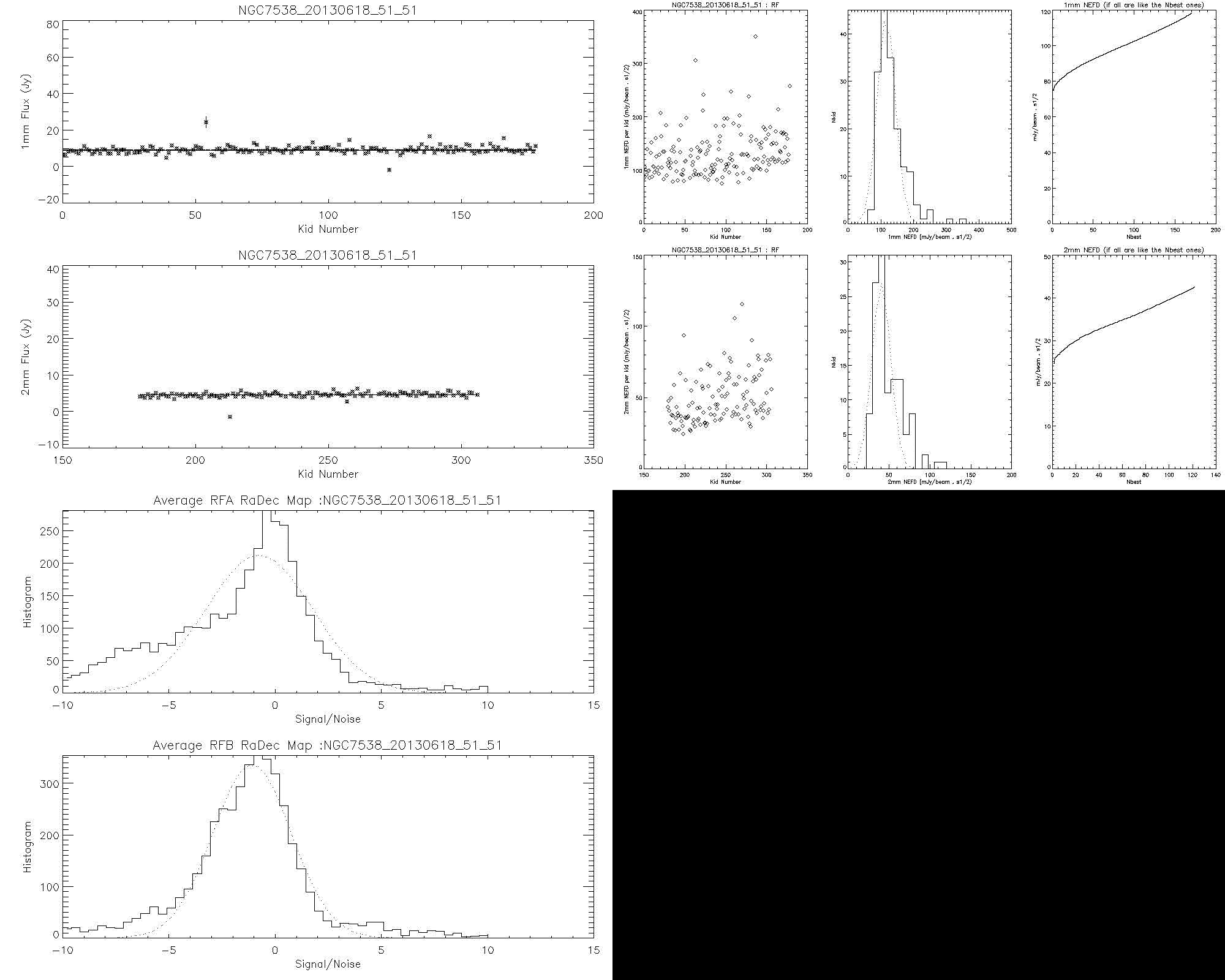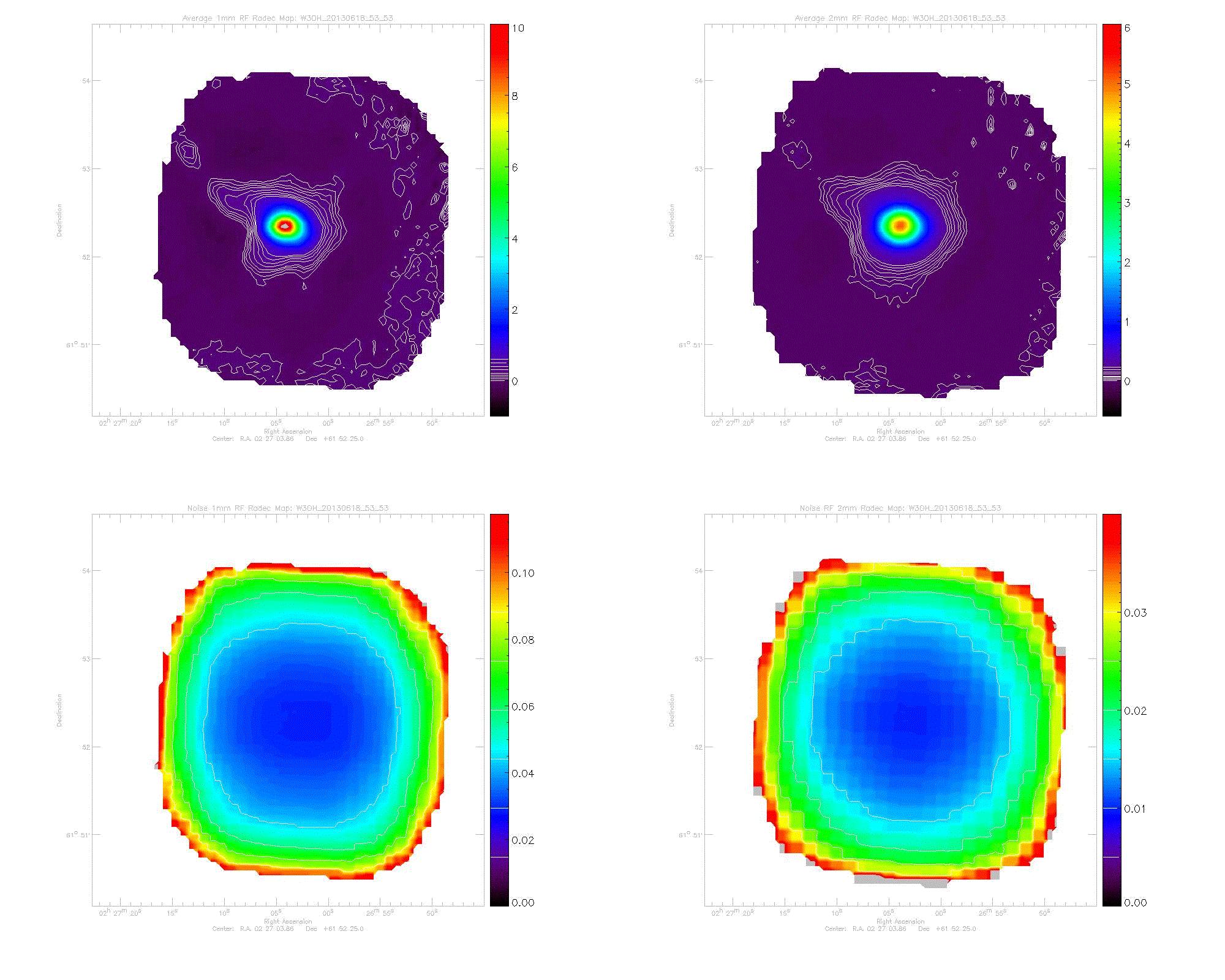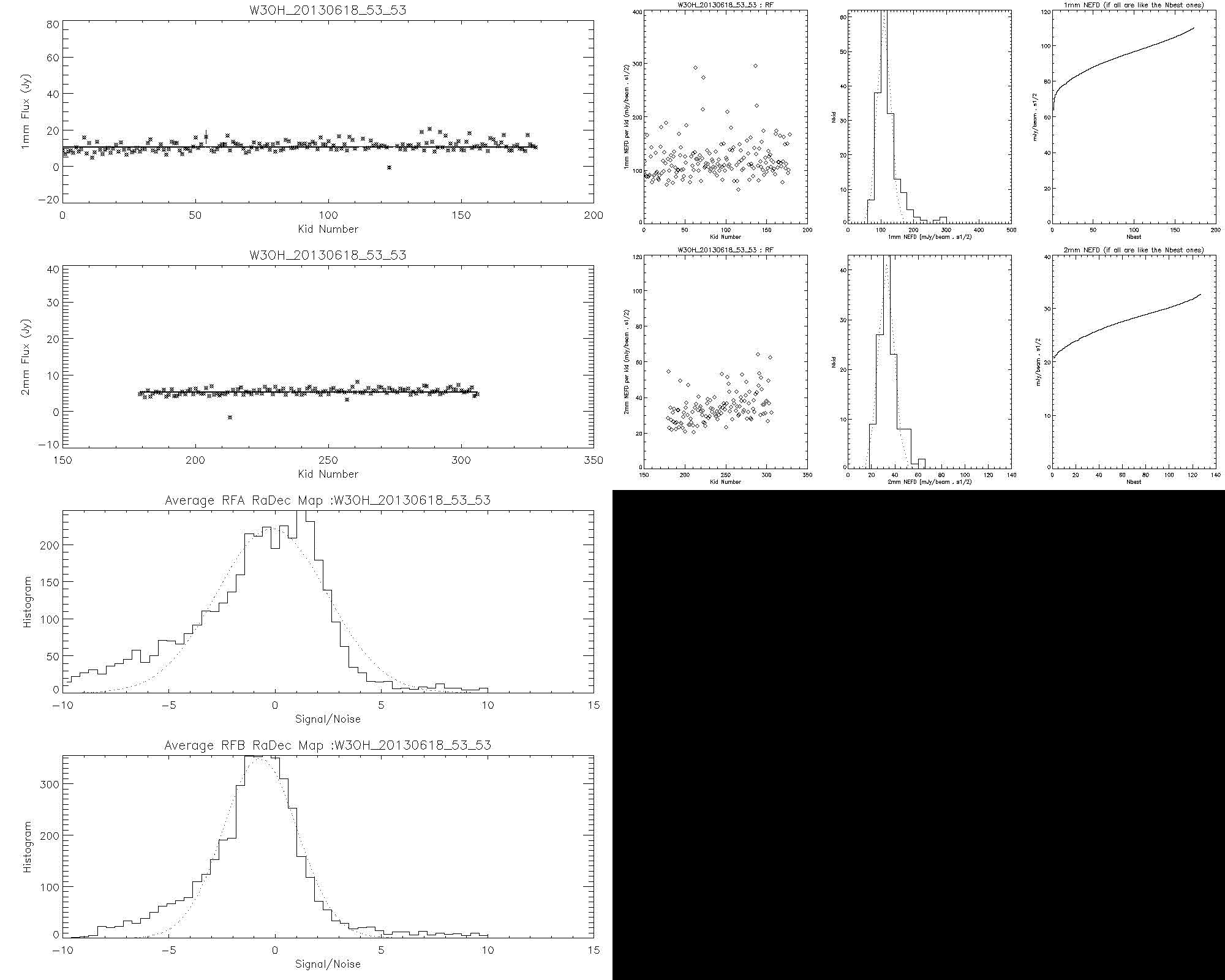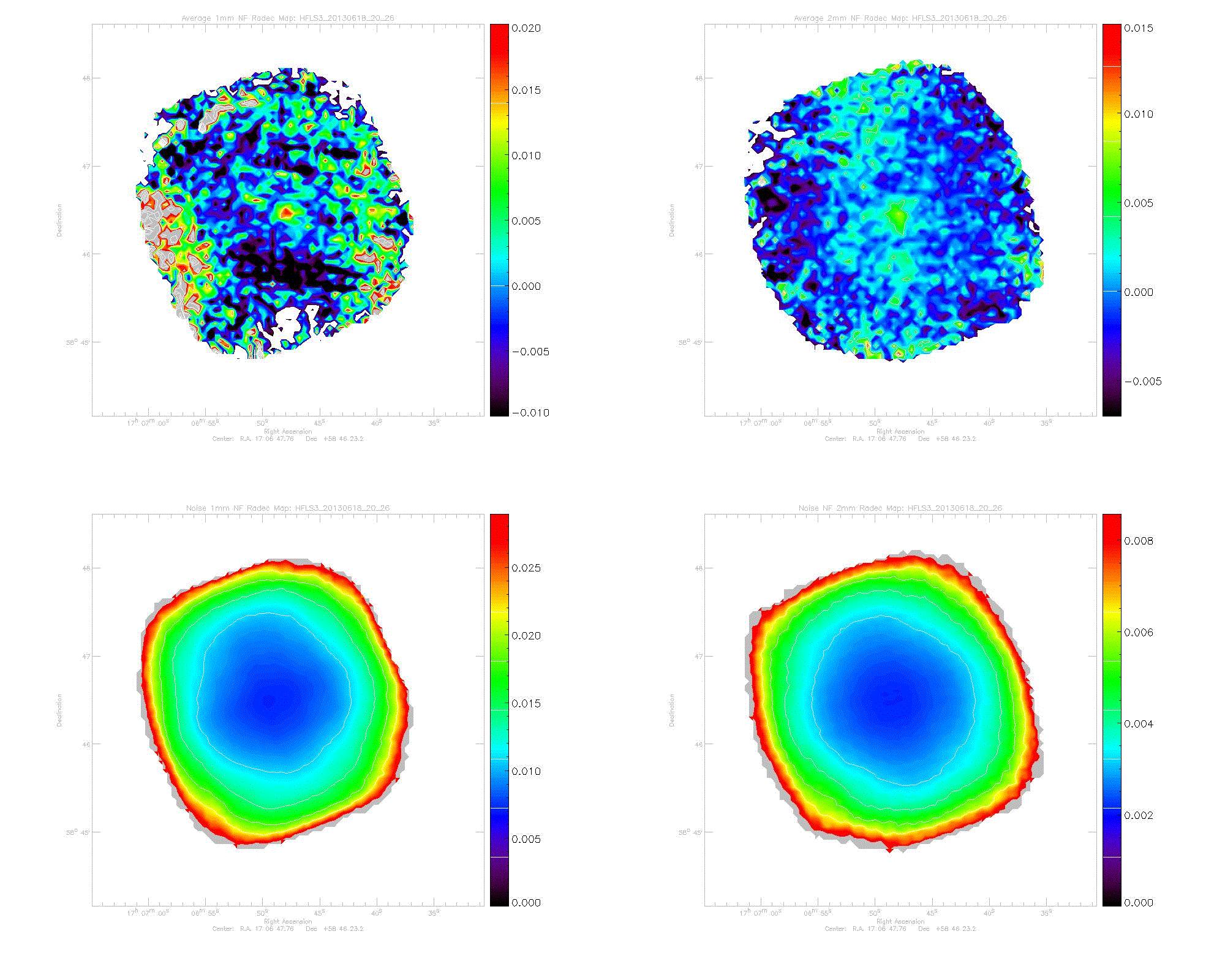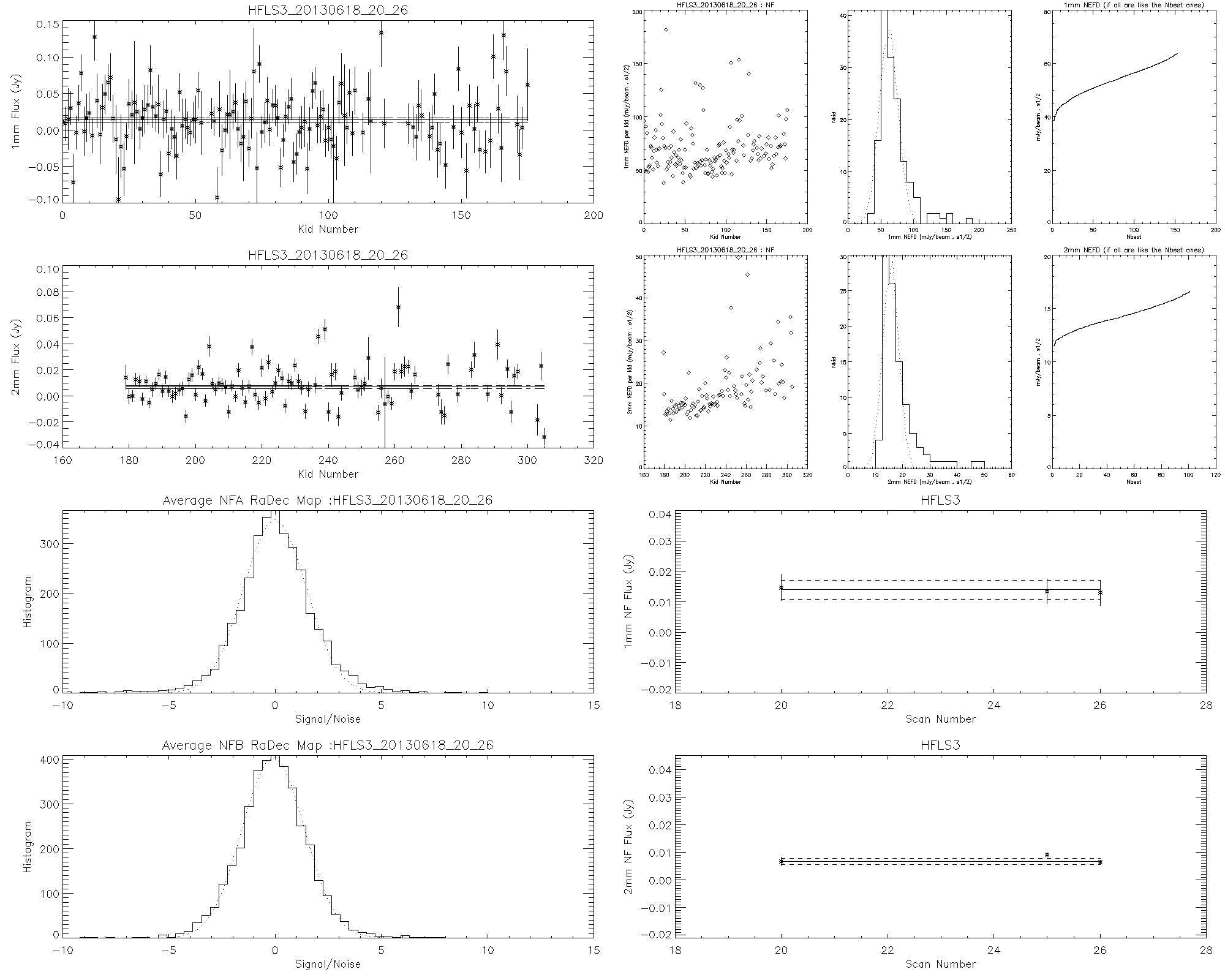Short photometric analysis of the last night of observations (FXD)
Back to the NIKA run6 offline processing page
Goals
- (19/06/2013) This is a preliminary photometric analysis of a sample of scans obtained during the last hours of run. The opacity went down at that time. The beam came close to the diffraction limit. The offline processing software has been largely tested on Run5 and has been quickly fixed to adapt to the new Lissajous scans on point sources. The taumeter is used for opacity correction with a nu^2 scaling between the 1.2 and 2.1mm channels (soon to be updated with the NIKAtau).
- (21/06/2013) Update the post with noise measurement on a weak source
NIKA observations
Day: 18/06/2013
Scans: Lissajous of 5 min on secondary calibrators and otfgeom (12min) for Uranus
Size of the Lissajous pattern: 90"x90"
Size of the map: 180"x180"
Opacity at 225 GHz: 0.2 (0.4 for Uranus otfgeom)
Elevation of the sources: 40-60 deg
First the primary calibrator Uranus is set at 47.2 and 16.4 Jy.
We observe each source at both wavelengths, shown on the maps given below. Contours are at 1,2,3,4,6,8,10 and 12 sigma.
* First we start with a quasar (a true point-source) : 3C345
* Then here are 3 secondary calibrators
* Notice the second source in the NGC7538 field. A discovery? Notice some extended weak features too in other fields. In brackets, the MAMBO value (IRAM report, Lisenfeld et al.).
Fluxes for 3C345 are 1.9579 +- 0.0053, 2.7098 +- 0.0016 Jy (at 1.2 and 2.1 mm)
Fluxes for MWC349 are found as : 1.8551 +- 0.0064 [1.62 +- 0.13], 1.6512 +- 0.0019 Jy
Fluxes are for NGC7538: 9.1976 +- 0.0097 [5.69+-0.48], 4.6906 +- 0.0029 Jy
Fluxes are for W3(OH): 10.8917 +- 0.0091 [6.98+-0.44], 5.4545 +- 0.0022 Jy
These fluxes are systematically too high (by about 30%) with respect to Mambo values. This is probably an issue with beam or Uranus photometry.
Point-source noise measurement
Several scans were done on the faint point source HFLS3, discovered by Riechers et al Nature, April 2013, at the redshift of z=6.337, with these fluxes: S240GHz=15+-0.2mJy, S140=3.2+0.12 PdBI. I selected only 3 Lissajous scans of 5 minutes each (the others may have problems due to the 1mm tuning sensitivity at low opacity): 20, 25, 26 on 20130618. The maps are there (no smoothing, pixel size = 3 arcsec, contours at 1, 2, 3 sigma):
|
|
The source is clearly detected at both frequencies (in 15 minutes!) with a flux of 12.6 +- 2.2 and 8.4 +-0.5 mJy. The flux is reproducible between the 3 scans (see figure on the right, above). We find a flux in good agreement at 1.2mm with Riechers' value. The flux at 2mm is 2.4 times larger than the PdBI and Gismo value (to be understood, a bandpass issue?). NIKA can detect source at the end of the Epoch of reionization!. The time spent on the source is 78 and 100% of the 15 minutes of integration. The array NEFD is 60.2, 15.7 mJy.s1/2. This is the best NIKA performance achieved at 2mm. The 1mm sensitivity is limited (with respect to Run5) by the additional spectral bandpass filter (see this page) needed to reach the low temperature. The NEFD of the 20 best detectors in each channel is 46.2, and 13.1 mJy.s1/2 (see figures above). Notice that for the 2mm array, higher numdet detectors have a worse sensitivity, an issue that could be solved by an improved electronic power tuning.

